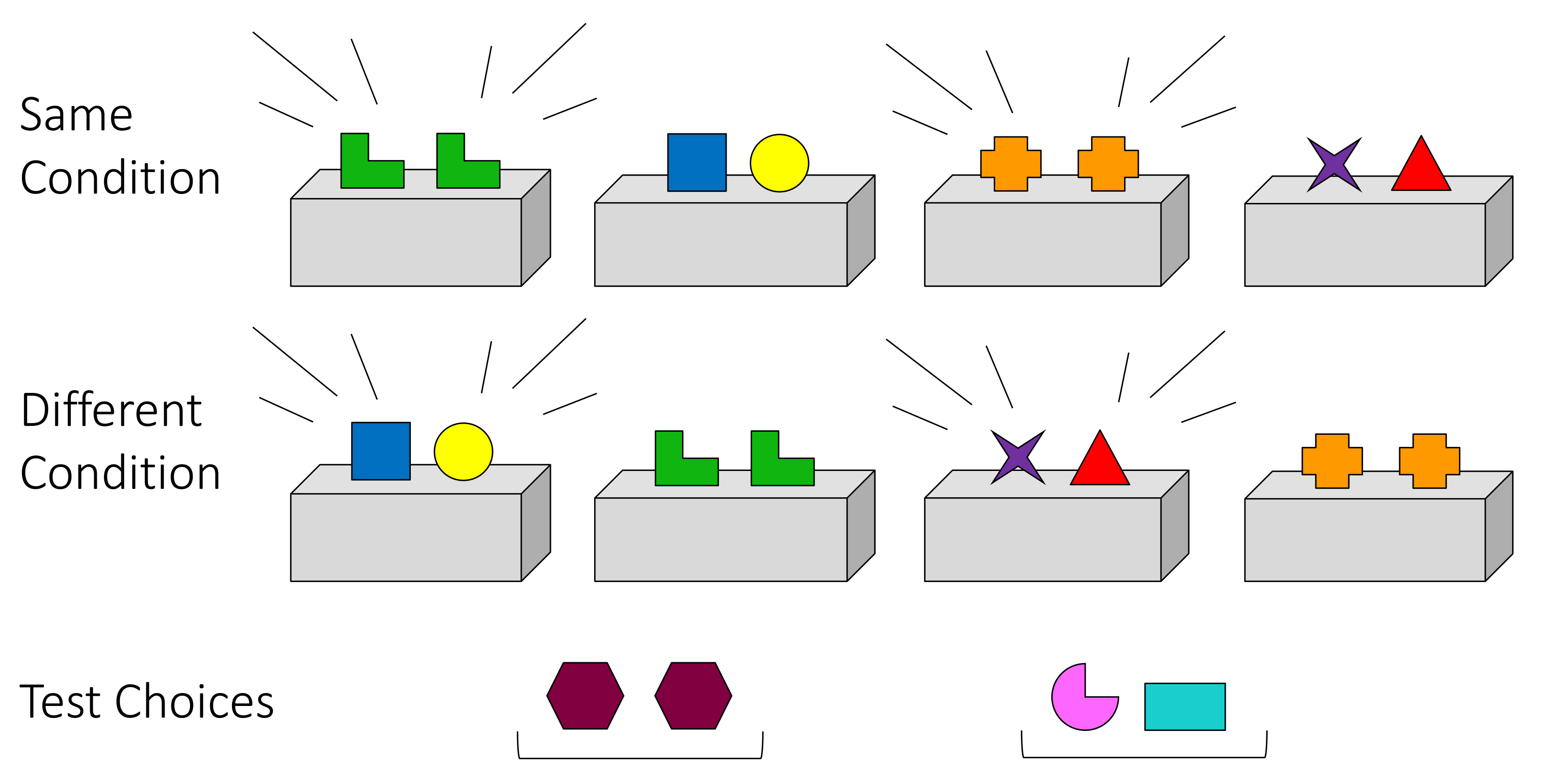Culture Shapes How We Learn to Reason?
New research in the U.S. and China suggests there isn’t a universal trajectory for how abstract thought develops in children
Published Date
By:
- Inga Kiderra
Share This:
Article Content

Grouping like objects together is one example of the type of abstract thinking that psychology researchers call “relational reasoning.” Photo by iStock_master1305.
If you made any plans for next week, congratulations! You’ve demonstrated a key feature of being human: being able to think beyond the here and now – or, think abstractly. But when babies learn different kinds of abstract thought, and how, is still hotly debated by psychologists. Now new research published in the Proceedings of the National Academy of Sciences suggests that cultural environment may play a role.
The paper, titled “Context Shapes Early Diversity in Abstract Thought,” details three experiments involving nearly 400 children in the United States and China, aged 18 to 48 months old.
The children were tested on their “relational reasoning” skills. Specifically, they were tested on their ability to infer the abstract concepts “same” and “different” from pairs of blocks that either matched each other or did not.
The youngest children in the U.S. and China appear to have similar success. By age 3, however, Chinese children are outperforming their U.S. counterparts, the research shows.

Children were shown that either identical pairs of blocks or mismatched pairs of blocks activated a toy to play music. They were then asked to choose which novel pair was going to do the trick. Figure courtesy Carstensen et al, PNAS.
The under-3 set do comparably well at recognizing the relationships between pairs of blocks – whether they’re the same or different – and then figuring out whether these blocks’ sameness or difference is responsible for activating a musical toy. But then the skills diverge in the two cultures for a while. Also, when given a choice between favoring an object-based solution (concrete thinking) and a relation-based solution (abstract), U.S. 3-year-olds favor the former while Chinese 3-year-olds, on the other hand, go for the latter.
Why? Why does the development curve for American kids looks like a “U,” with relational reasoning skills dipping around age 3 until they pick up later – while Chinese children show no such dip in the middle, and their development seems to follow a linear trajectory?
The root reasons could be linguistic, the paper’s authors suggest, or they could be cultural, environmental or some combination of these. In any case, what seems to be at work is a “learned bias,” with children in the U.S. learning, for a while, to focus on objects to the detriment of relations.
The paper’s first author is Alexandra Carstensen, now a postdoctoral researcher at Stanford University and a visiting scholar at the University of California San Diego. The paper’s senior author is Caren Walker, assistant professor of psychology at UC San Diego and director of the university’s Early Learning and Cognition Lab.
Carstensen and Walker started working on the idea when both were graduate students at UC Berkeley. Walker had shown earlier that children begin to reason abstractly much younger than had been previously believed (as well as that, in the U.S., they lose the ability for a while). That work inspired Carstensen to wonder about the possible role of language.
Both Carstensen and Walker are doing follow-up work to extend the research.
Carstensen and Walker are trying to figure out, with graduate and undergraduate students in Hungary, Germany, Italy, the United Kingdom and Pakistan, what cultural features might be most relevant to relational reasoning and the learned bias against it.
Walker and her lab, meanwhile, are also doing a series of projects to examine ways to get preschoolers in the U.S. to think more abstractly.
“It doesn’t have to be something as grand as language or cultural context that makes a profound difference,” Walker said. “It could be as small as changing a few features of the learning environment – or just changing a handful of simple learning cues.”
In addition to Carstensen and Walker, other co-authors on the paper are: Jing Zhang of Zhejiang Normal University; Kang Lee of the University of Toronto and Zhejiang Normal; Genyue Fu of Hangzhou Normal University; and Gail Heyman of UC San Diego.
The research was supported, in part, by a National Science Foundation Graduate Research Fellowship Program grant [DGE-1106400] to Carstensen, a McDonnell Foundation award, and a Hellman Fellowship to Walker.
Share This:
Stay in the Know
Keep up with all the latest from UC San Diego. Subscribe to the newsletter today.



